Evaluating Dysphagia Across the Life Span
Please enter a valid quantity
Please select a product format
That product is out of stock
BEFORE YOU BUY...
This course is one of more than 750+ CE courses in the ASHA Learning Pass, which gives you unlimited access to more than 1,350 hours of CE content for the cost of just one or two a la carte courses.
*If this is a recent SIG Perspectives course, you must also be a Special Interest Group (SIG) affiliate to unlock it as part of your subscription.
Already an ASHA Learning Pass subscriber?
Login
The assemblage of articles presents clinicians with information on a variety of topics in dysphagia that can be utilized in practice. Laura L. Madhoun, Laura C. Merrell, Amanda Smith, Emily Snow, and Kristen M. Cherosky stress the importance of individualized and comprehensive feeding management for craniofacial anomalies through interdisciplinary collaboration. Lena G. Caesar and Meretu Kitila study clinicians’ perceptions and confidence with dysphagia service delivery. Aliaa Sabry, Amanda S. Mahoney, Shitong Mao, Yassin Khalifa, Ervin Sejdic, and James L. Coyle point out an objective way to assess laryngeal vestibule closure and opening at beside. Marie Jardine, Anna Miles, Jacqui Allen, and Rebecca Leonard give an interesting take of assessment of the aging swallow. Kelsey L. Thompson and Wanqing Zhang provide description and examples of mixed method research to comprehensively and holistically report of pediatric feeding disorders.
Learning
Outcomes
You
will be able to:
- describe the importance of a collaborative multidisciplinary team with children with cleft lip and/or palate and their families
- summarize perceptions of speech-language pathologists regarding their academic preparation and practice confidence with dysphagia
- explain high-resolution cervical auscultation as a means predict laryngeal vestibule status without imaging
- describe age-related changes in swallow efficiency in healthy adults
- describe mixed method study design specific for pediatric feeding disorders
Assessment
Type
Self-assessment—Think
about what you learned and report on the Completion Form how you will use your
new knowledge.
Articles
in This Course
- Beyond the Bottle: Interdisciplinary Cleft Feeding Care, by Laura L. Madhoun, Laura C. Merrell, Amanda Smith, Emily Snow, and Kristen M. Cherosky, published in SIG 13, Volume 5, Issue 6,
December 17, 2020
- Speech-Language Pathologists’ Perceptions of Their Preparation and Confidence for Providing Dysphagia Services, by Lena G. Caesar and Meretu Kitila, published in SIG 13, Volume 5, Issue 6, December 17, 2020
- Automatic Estimation of Laryngeal Vestibule Closure Duration Using High-Resolution Cervical Auscultation Signals, by Aliaa Sabry, Amanda S. Mahoney, Shitong Mao, Yassin Khalifa, Ervin Sejdic, and James L. Coyle, published in SIG 13, Volume 5, Issue 6, December 17, 2020
- Quantifying Post-Swallow Residue in Healthy Aging, by Marie Jardine, Anna Miles, Jacqui Allen, and Rebecca Leonard, published in SIG 13, Volume 5, Issue 6, December 17, 2020
- Using Mixed Methods Research to Better Understand Pediatric Feeding Disorder, by Kelsey L. Thompson and Wanqing Zhang, published in SIG 13, Volume 5, Issue 6, December 17, 2020
|

